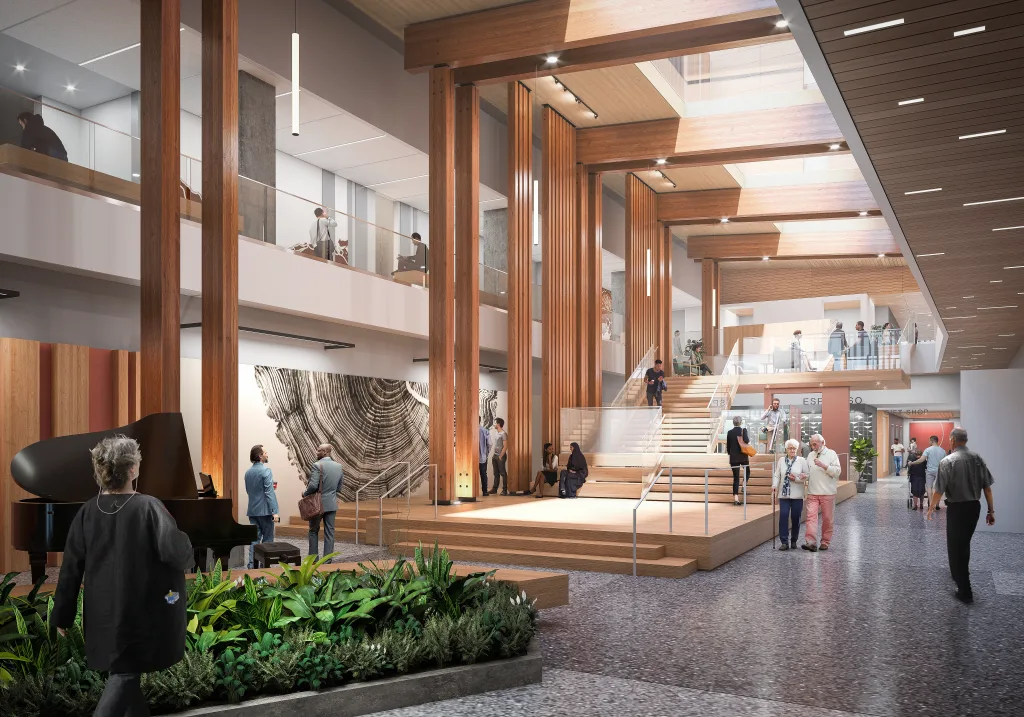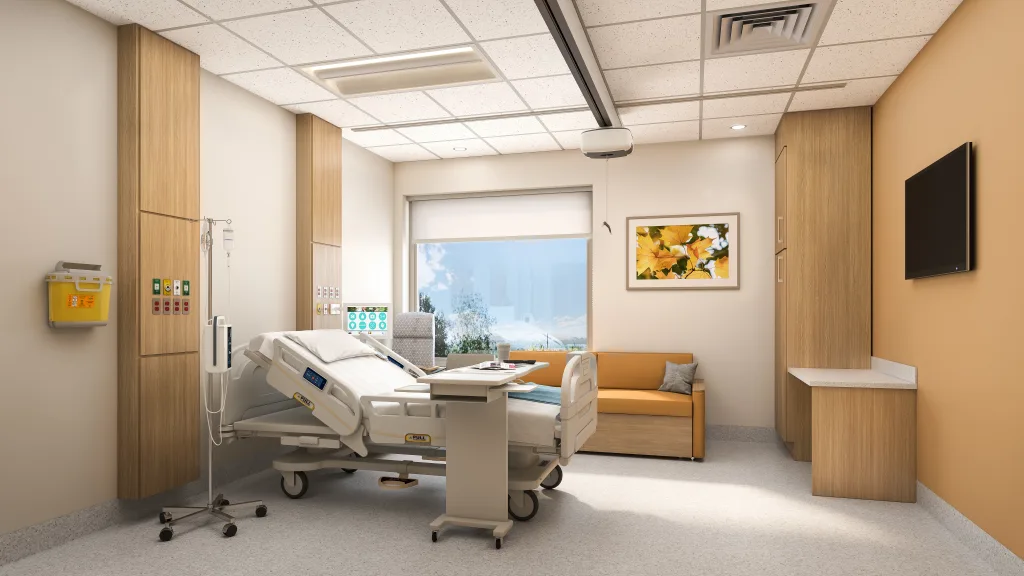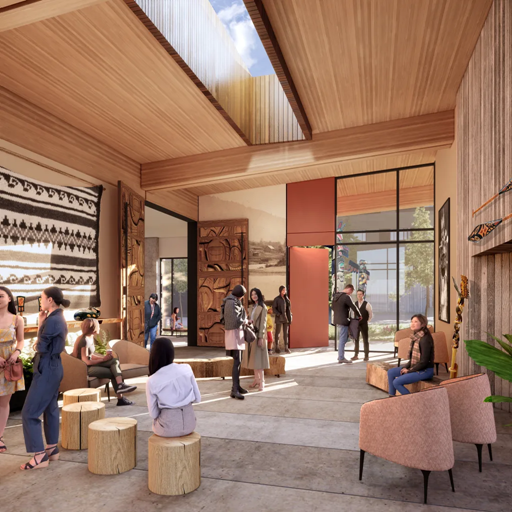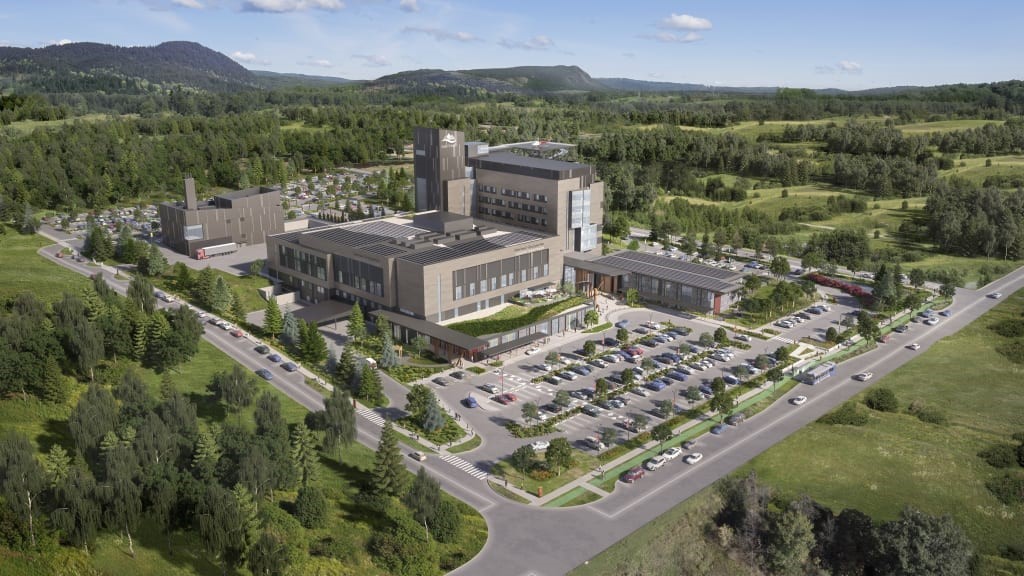The rooms in this British Columbia hospital were designed to accommodate ritual burning. Here’s why
A hospital on Vancouver Island prioritized the Indigenous community’s needs and culture when designing this new healthcare model.
Canada’s history, like that of the United States, is fraught with the mistreatment of Indigenous peoples. This is especially true in terms of medical care, as Canada is still reconciling a legacy of so-called “Indian hospitals” that were racially segregated and provided native peoples with poor care.
Many of these hospitals were closed or torn down in the 1980s. Now, one of those locations in British Columbia has been torn down and will be replaced by the Cowichan District Hospital. Opening in 2026, it aims to establish a new model for culturally inclusive healthcare design. The hospital will be on Vancouver Island, where First Nations peoples make up 12% of the population.
Over two years, ZGF and Parkin Architects met with representatives from the Cowichan Tribes to learn more about what Indigenous peoples wanted from the hospital experience. The resulting project took these recommendations into account, including hiring more Indigenous staff, offering trauma-informed care, and creating more inclusive spaces.
But perhaps most significantly, the hospital rooms will support Indigenous healing customs on a scale not seen before. They’ll accommodate “ritual smudging or burning.” This is the practice of burning herbs or incense or having a small flame during times of illness or death. In Canada today, healthcare policies require that at least one room in a hospital be equipped for Indigenous healing practices, but the new hospital boasts 185 rooms able to support ritual smudging or burning. Kyle Basilius, principal architect on the project, says it’s “a step in the right direction,” noting that the project will show the “representation, culturally safe design, and innovation we can continue to implement in healthcare facilities to right the wrongs of the past—at least in the design space.”

The History of Indian Hospitals
To understand how significant these design choices are, it’s important to understand the history of Indian hospitals. In Canada during the 20th century, racially segregated Indian hospitals were created to treat First Nations and Inuit peoples. These hospitals were justified as a means to provide better healthcare outcomes for those populations during times of high tuberculosis rates. But in reality, the hospitals contributed significantly to their suffering.
Indian hospitals often used treatments that weren’t common practice elsewhere. Deeming Indigenous peoples unable to manage their illnesses at home, for example, hospital staff often used painful and invasive surgeries, sometimes even medically experimenting on patients without their consent.
Despite the terrible treatment, some patients were forced to stay. In 1953, a Canadian law made it criminal for Indigenous peoples to refuse healthcare or leave a hospital before discharge. As a result, police arrested patients and returned them to the Indian hospitals if they tried to leave. Other injustices were also committed, like hospitals refusing to return deceased patients to their families or burying bodies in unmarked graves. Most of these hospitals closed or were converted into primary care clinics in the 1970s and ‘80s.

Lingering Trauma
Unsurprisingly, many Indigenous community members today still feel a deep skepticism of the Canadian healthcare system. A 2022 study by the Aboriginal Health and Wellness Centre in Winnipeg showed that Indigenous nations often feel discriminated against at Canadian hospitals, or feel a sense of mistrust about the healthcare system generally. This can lead to worse health outcomes, as patients are reticent to go to the hospital, according to Dr. Pat Gallagher of Island Health, a healthcare system for Vancouver Island, the islands in the Salish Sea, and the Johnstone Strait. The Cowichan District Hospital aims to address these problems.
“Vancouver Island hospitals became tainted by the stain of the Indian hospitals,” says Dr. Gallagher. “So, when we looked to replace the hospital, we wanted to make it more welcoming to overcome the stigma. It’s very important for us to provide a building that Indigenous peoples can come to at an earlier stage of whatever illness they have.”
The new hospital’s design elements include a focus on aesthetics—like timber framing, a mainstay in ceremonial longhouses—but there are also many crucial changes in functionality.
A Culturally Inclusive Healthcare Design

Burning and smudging customs are common in Indigenous beliefs surrounding healing, but Cowichan’s design originally called for just one room to be equipped for these traditions. Parkin Architects felt that they could do better and designed 185 instead, so patients wouldn’t need to leave the comfort of their own rooms to perform their customs. Architects worked with mechanical engineers to make sure each room could accommodate independent smoke systems.
All a patient must do is let the nurse know that they’d like to complete burning or smudging practices. From a computer, operations then turns off the smoke detectors in that room. According to Dr. Gallagher, the team negotiated with the fire marshal to allow smoke detectors to be turned off for less than 60 minutes; both parties agreed this would ensure the safety of the entire building. The team made certain that the smoke from the room wouldn’t impact the health or safety of anyone in the hospital. “Oxygen is built into the pipes in the wall, so there are no exposed tanks, no risks for explosion or harm,” says Basilius.
How the hospital circulates its indoor air will be different too. Instead of the standard of using about one-third outdoor air and two-thirds recirculated air, the new building will use 100% outdoor air, according to Meagan Webb, the mechanical engineer on the project. This will help disperse the smoke from the burning and smudging ceremonies more quickly.

The ventilation system will push exhaust air from the building and keep it from coming back inside. This redesigned system also means the hospital will use less energy to heat and cool the building. Moreover, each room will have its own individual air flow and temperature controls.
“Indigenous engagement led us to make the HVAC accommodate burning and smudging,” says Dr. Gallagher. “But we also have small, operational windows, something you won’t see in a hospital.” This feature will help circulate smoke but also addresses an important Indigenous belief. “If someone dies in a hospital bedroom, First Nations’ teachings say that the person’s spirit needs a way to escape into the environment.”
The building may be a sign of new hospitals to come. Gallagher says the team has already received inquiries about the process of engaging Indigenous groups in the design. Parkin has also been chosen to design a new medical facility near Vancouver, where Basilius hopes to again highlight Indigenous engagement and reconciliation. “In every detail, we are trying to make sure that when First Nations peoples come to the hospital, they will know this is their building and that they will get respectful care,” says Gallagher. “The area has had a long and difficult history, and we hope the hospital will make significant positive impacts.”
ABOUT THE AUTHOR
(52)